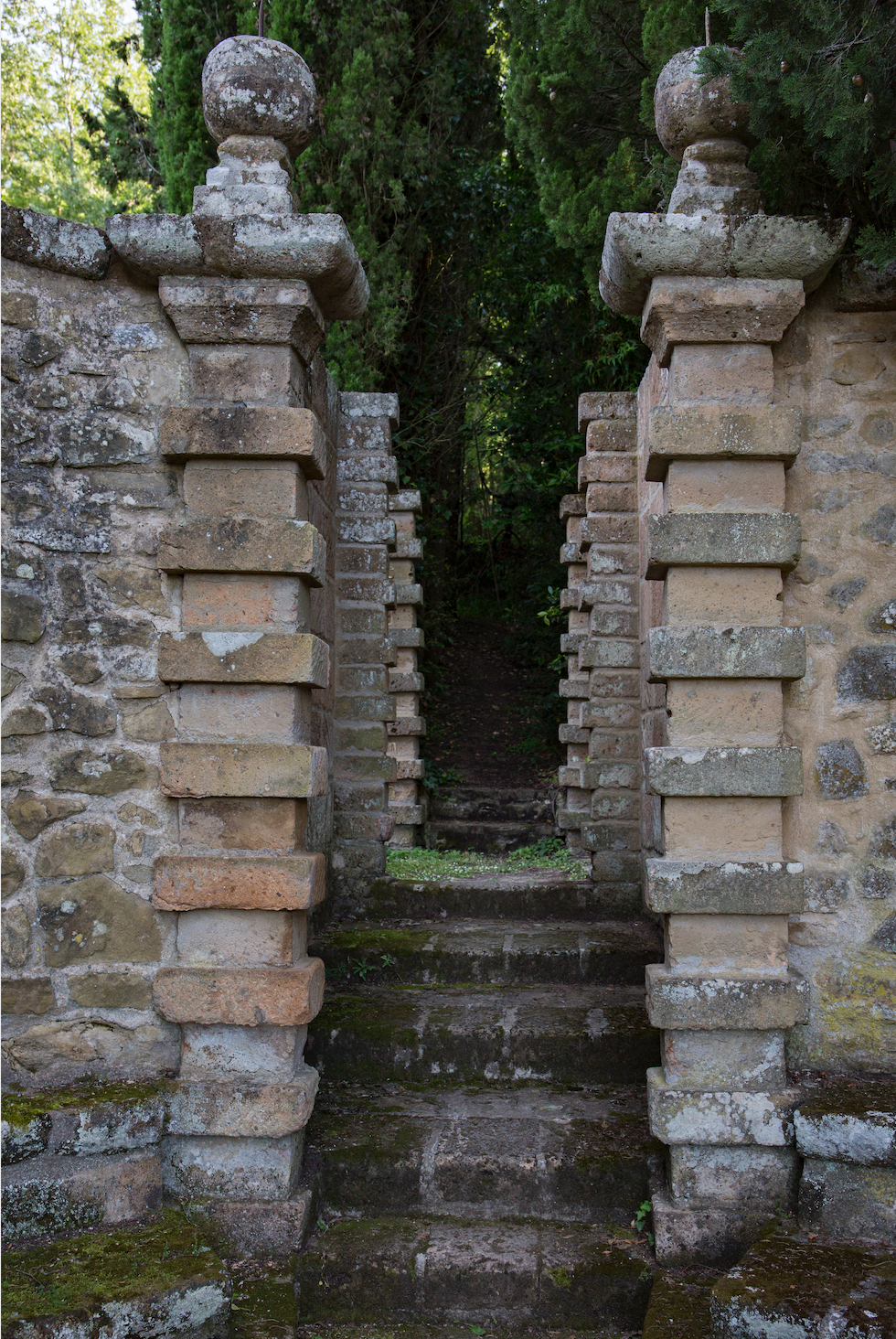Italian art curator, Giorgio Pace - co-founder of biannual art fair, NOMAD - discovers an architectural playground in Umbria to be interpreted and deciphered: the huge theatrical set, La Scarzuola, dreamt up by architect Tomaso Buzzi.
BY GIORGIO PACE | CABANA TRAVEL | 21 FEBRUARY 2024

I first encountered Tomaso Buzzi’s name during a trip with friends. They had kindly invited me to discover a magical, esoteric, and enchanted place called La Scarzuola. Tomaso began working on it in the ’50s, but never quite finished it.
Tomaso had bought a Franciscan monastery from a local nobleman. He decided that this would be his home and his ideal city, where he would keep his archive, his books, and all the things that he accumulated over the years. It would be this enchanting place, far from the chaos of the modern world, where he would realize his dream.
Marco, his nephew and heir to the project, was able to bring to fruition what Tomaso had not managed to finish. Through his patient study of sketches, drawings and many notes, sometimes indecipherable, Marco managed to finish this Buzziana city and, at the same time, the church adjacent to the Monastery.
Tomaso Buzzi was an architect, a creative and ingenious interior designer, the artistic director of Venini, a cosmopolitan socialite of the 1900s who, thanks to his important relationships, worked on the most beautiful houses including the renovation of Palladio’s Villa Maser; a floor of the Palazzo Papadopoli in Venice; the interior design of the Bolzano warship lodgings and the Martini & Rossi terraces in Milan and Genoa.
He collaborated with Gio Ponti, and for many years worked on and wrote for Domus. For a number of years he held, together with Ponti, two professorships at the Politecnico of Milan. Renzo Mongiardino and Gae Aulenti were among his students.
La Scarzuola was already famous for having been the site of the passage of Francis of Assisi in 1218; a sanctuary was built there. The name has its origins in the word scarza, a marsh plant with which, according to legend, Saint Francis built his shelter. After passing through the Sacred City—the church and the monastery—we move on to the Profane City, the theater and the Acropolis.
As soon as you pass through the slightly dark paths, the huge theatrical set of Buzzi’s dream opens up before you: you are on the top of an amphitheater with steps that descend to a labyrinth. Beyond the amphitheater, a huge construction represents a ship; in the middle of the keel there is a representation of the third eye, on the sides of which are two chimeras playing the lyre covered with ivy. On each side, there are two circular boxes painted with the symbols of the sun and the moon.
The Acropolis is located on top of the shiplike construction. It is easy to identify the reproductions of the Colosseum, the Parthenon, the Arc de Triomphe. On the other side of the Acropolis is a chapel-shaped building and a door with stars that contain the initials of Tomaso Buzzi: the puppet theatre is located inside.
This ideal city seems never to end. It is a world to be interpreted and deciphered, a world in which to discover the genius of Tomaso Buzzi.

A version of this article first appeared in Cabana Issue 10 | Shop Cabana Magazine
Cabana Magazine N24
Covers by Morris & Co.
This issue will transport you across countries and continents where craft and culture converge. Evocative travel portfolios reveal Japan's elegant restraint, Peru's sacred churches ablaze with color, and striking architecture in a fading Addis Ababa. Inspiring minds from the late Giorgio Armani to Nikolai von Bismarck spark curiosity, while exclusive homes—from the dazzling Burghley House in England and an Anglo-Italian dream in Milan, to a Dionysian retreat in Patmos and a historic Pennsylvania farmhouse—become portals that recall, evoke and transport.



























































